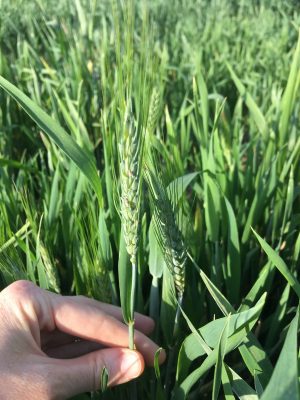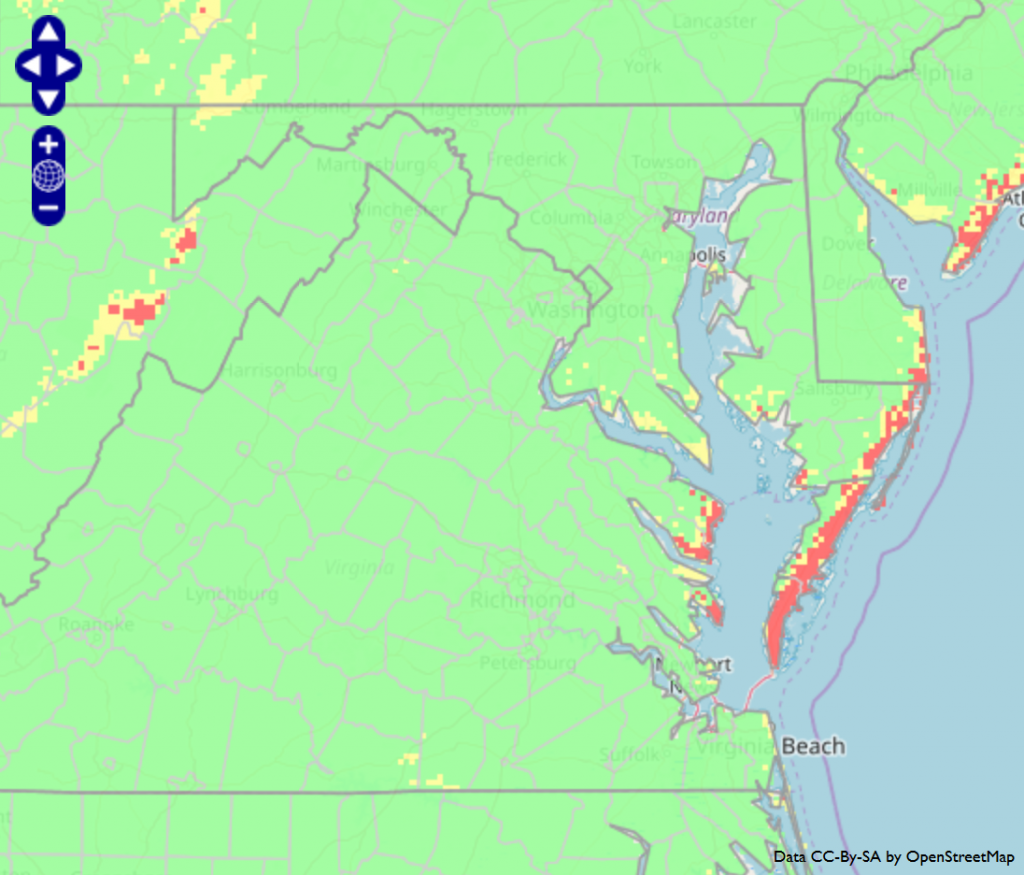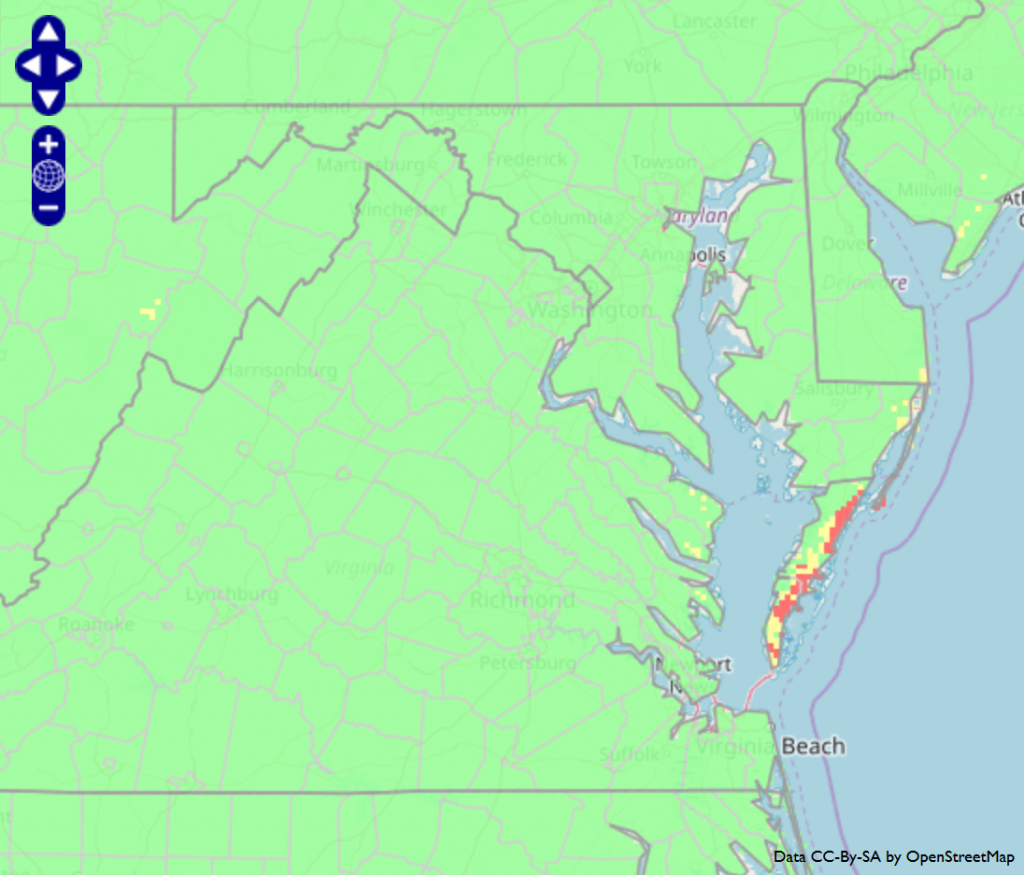There is increased risk of Fusarium head blight (FHB) in some parts of Virginia, especially near the Northern Neck and Eastern Shore of Virginia. Wheat in much of the state is flowering, and if a field is in a high risk area a fungicide application is recommended. Recommended fungicides for control of FHB and DON contamination include Caramba, Prosaro, Proline, and Miravis Ace. Do not apply a strobilurin-containing fungicide after the flag leaf stage since this has the potential to increase DON concentrations in the grain. To maximize their effectiveness, fungicides for FHB and DON control should be applied at early flowering or up to one week later. Fungicides that control FHB and DON will also control foliar diseases including powdery mildew, leaf rust, stripe rust, and leaf blotch.
Wheat varieties vary in susceptibility to FHB and DON, and this should be considered when making decisions of whether or not to apply a fungicide at flowering for FHB control. The FHB Risk Tool (http://www.wheatscab.psu.edu/) allows you to select the susceptibility of your wheat variety to determine risk. You can find information on FHB susceptibility of your wheat variety from your seed dealer or in the Virginia Cooperative Extension Small Grains publication. The FHB Risk algorithm adjusts the relative risk based on the variety susceptibility as illustrated below. For assistance with small grains disease identification or for additional management recommendations contact Dr. Hillary Mehl, Extension Plant Pathologist (hlmehl@vt.edu).



